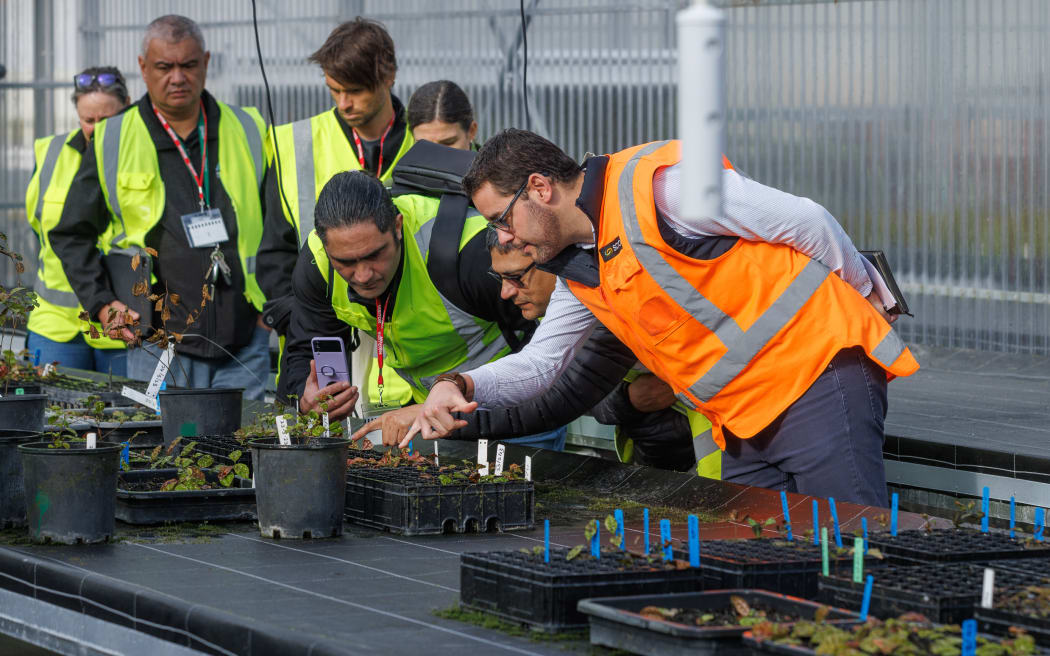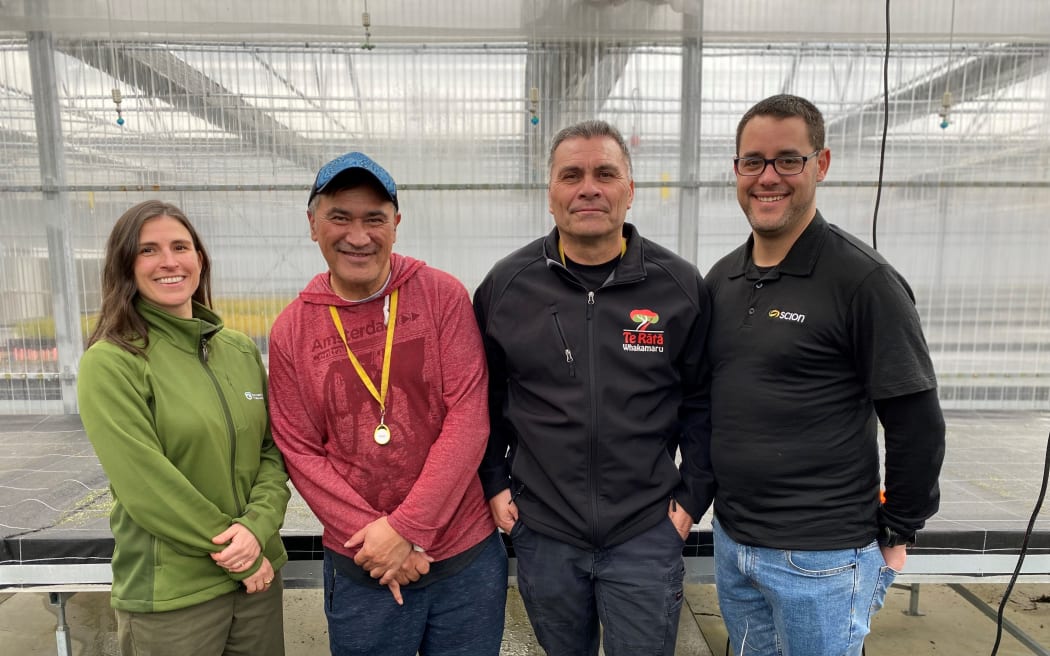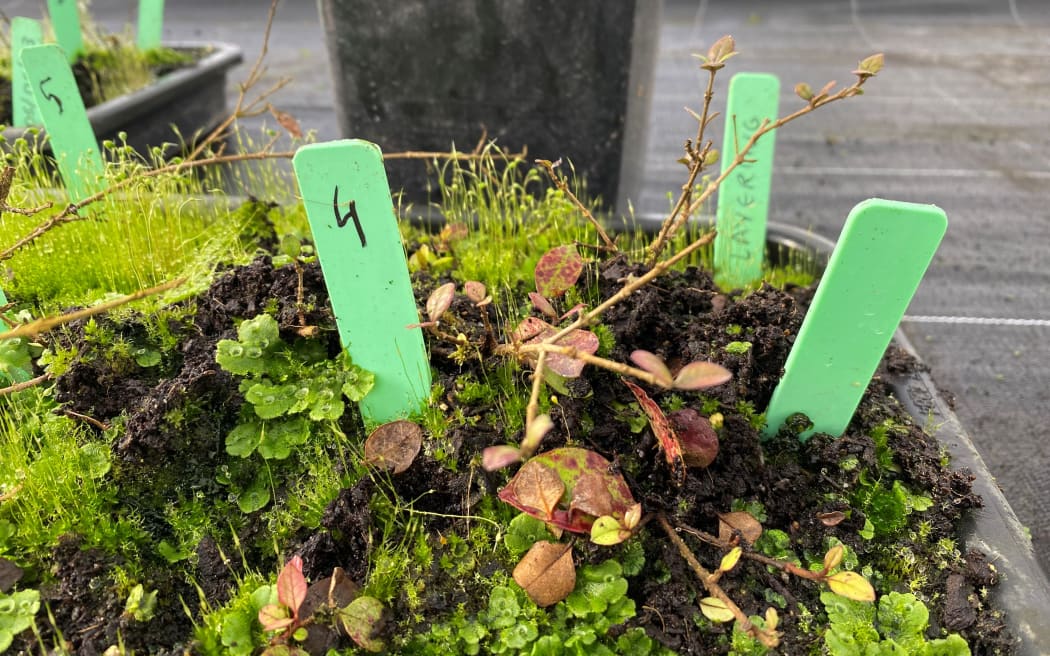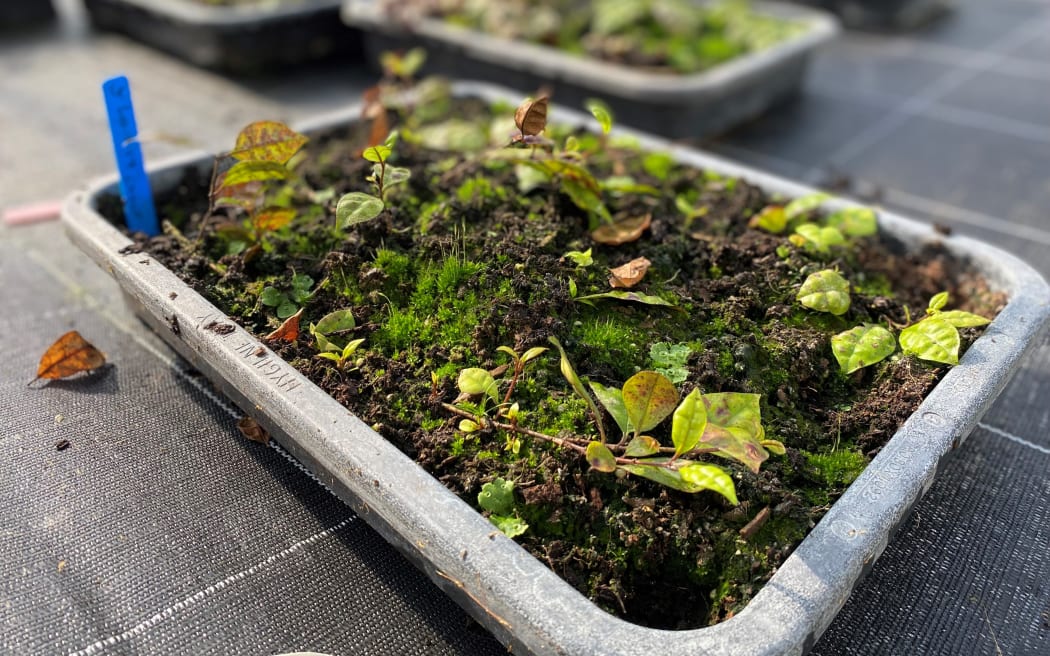
Scion and Rotoiti 15 inspect cuttings in the nursery. Photo: Supplied/Stephen Parker
Rotorua scientists are in a race against time to save native tree species from myrtle rust.
Scion forest pathologist Darryl Herron says the spread of the fungal disease since it entered the country in 2017 has created a sense that efforts are at a critical stage.
He says this, mixed with high lake levels in the area drowning tree populations of ramarama and rōhutu and in turn stopping the success of the reproductive cycle, means the country is at risk of losing the species altogether.
However, for others, the project is about more than trees.
"To me, the job is about people ... it's wonderful to look after our trees and look after our ngahere (forest) but it is bigger than that," Kawana Warahi says.
Warahi is a team leader, or manukura, of the Te Rata Whakamaru team who care for the project in the forest collecting data and findings.
The project is delivered in partnership with iwi-based trust Rotoiti 15, funded by Jobs for Nature through the Department of Conservation. Warahi says the young men working underneath him needed a "bit of guidance".
"It is really important that we nurture the trees and we also nurture our rangatahi working in the trees so they build that passion. And that passion will go home with them and they share it with their children.
"When I see our young ones in the bush and they're walking around ... I'm watching them develop. I love seeing them and how they grow in this space."
Warahi says the rangatahi take it personally when young trees don't survive in the nursery.
But within the year the project has been running he has seen them develop the skills to research and know the right questions to ask.
"To me that's great, it brings a tear to my eye. It's a whole different shift in their attitude and their mindset."

Kawana Warahi (from left), John Cunningham, and Darryl Herron. Photo: RNZ/Leah Tebbutt
One of the techniques the Te Rātā Whakamaru team has discovered is a layering system of propagation - a branch will fall and after being buried by the forest floor sprout a series of new shoots.
In an effort to save the trees, the project has focused on propagating cuttings before myrtle rust decimates them, Scion's Darryl Herron says.
"We've collected a number of cuttings from the forest and we have brought those cuttings to Scion's nursery, they're housed here. We're basically coaching them through trying to get them to a larger size where we will be able to do further work on the breeding aspect."
Herron says the layering technique, which is mimicked in the nursery, is a bang-for-your-buck approach in comparison to taking individual cuttings although both methods are necessary as only some trees may be resistant to myrtle rust.

The layered propagation system enables around 20 saplings to grow. Photo: RNZ/Leah Tebbutt
Ramarama and rōhutu trees belong to the Lophomyrtus genus and are part of the myrtle family that is at risk from this infectious airborne fungus.
"The population size of Lophomyrtus trees around the lakes area is quite small, and without any interventional management, we're likely to lose them completely," Herron says.
High water levels at Lake Rotomā, which since February have cut off access to some monitoring sites, are complicating conservation efforts.
Many trees are now underwater, restricting the Te Rātā Whakamaru team's ability to take cuttings.
"With myrtle rust impacting these populations, we've realised how important it is to propagate cuttings before myrtle rust decimates them and we lose all access to their fruit or seeds in the future."
Myrtle rust is a disease that targets new leaf growth, Herron says.
"If a tree is constantly impacted by myrtle rust it will start to die back and eventually it will stop producing fruit or seeds that would usually fall to the ground. You'll see fewer young saplings emerge and those that do are vulnerable to infection - that's when you stop getting natural regeneration in the forest."
John Cunnigham, another team leader at Te Rātā Whakamaru, says the programme has great value from a Te Ao Māori perspective.
"As a people we have to get back into the ngahere. I always maintain the forest is our first wānanga, you're out there listening to the birds, the trees and lakes and rivers.
"This is something that we as New Zealanders have to uphold, the health and wellbeing of our nature - for ourselves today most definitely, but for our future."
The best part of the job is making friends and family aware of the power and beauty of the forest, he says.

The layered propagation ecosystem in the Scion nursery. Photo: RNZ/Leah Tebbutt


